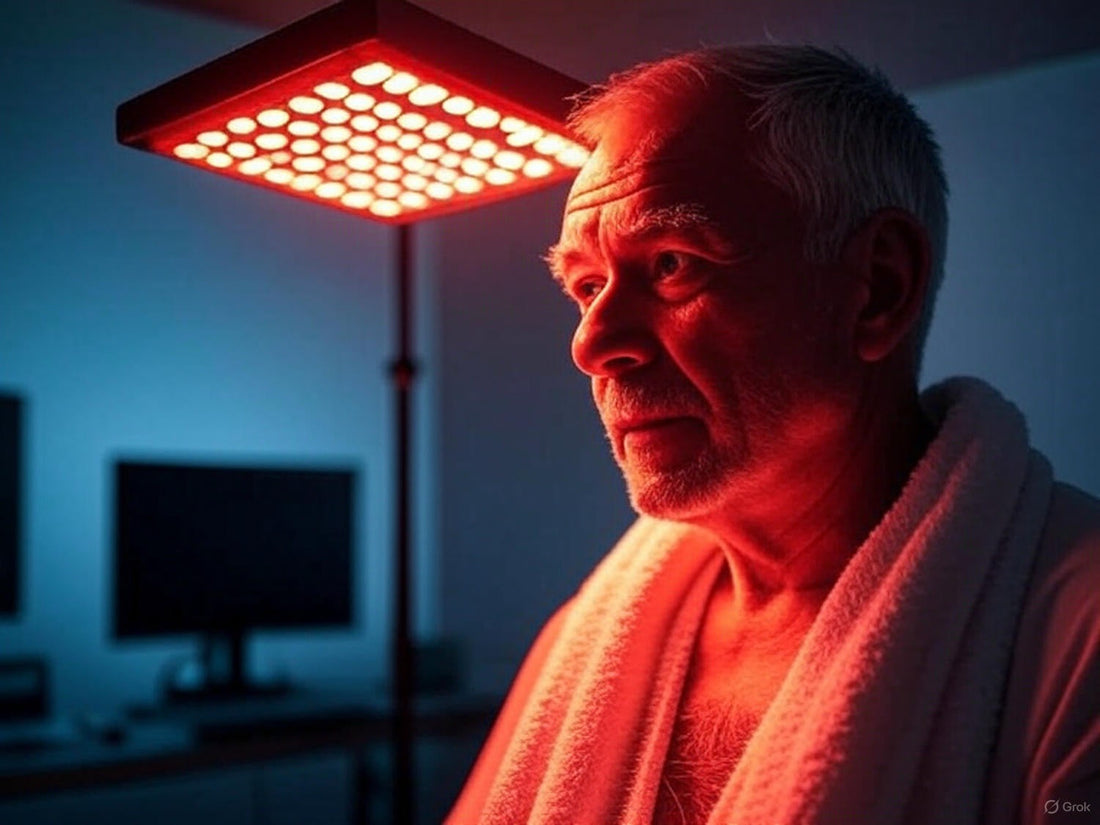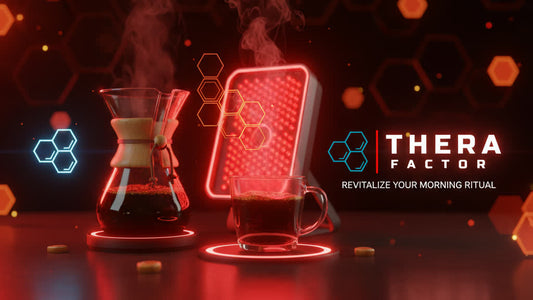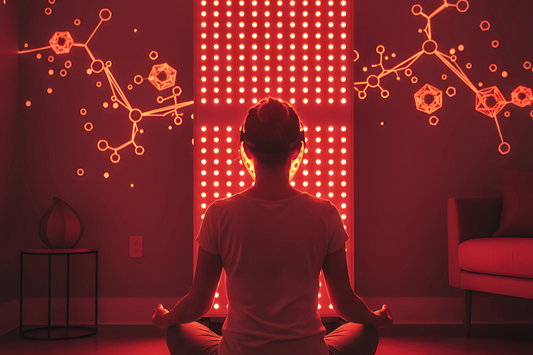
Red Light Therapy and Hair Loss
Share
Introduction
Hair loss affects millions of people worldwide, impacting not only their appearance but also their self-esteem and confidence. In recent years, red light therapy —also known as photobiomodulation or low-level laser therapy (LLLT)—has emerged as a non-invasive, safe, and scientifically validated option for stimulating hair growth and combating androgenetic alopecia .
In this article, we explore the benefits of red light therapy for hair loss , present the main studies that prove its effectiveness, and explain the mechanism of action at the cellular level.
1. What is red light therapy?
Red light therapy involves exposing the scalp to specific wavelengths, typically between 630 nm and 670 nm for visible red light and 800 nm and 850 nm for near-infrared light. These wavelengths penetrate tissue and are absorbed by cell mitochondria, triggering biochemical responses that promote hair follicle health.
Broad search phrases important for SEO include:
- red light therapy hair growth
- LED hair growth at home
- low level laser therapy hair
- laser for hair loss
- photobiomodulation hair growth
2. Mechanism of action: how red light works on hair follicles
2.1 Mitochondrial photobiomodulation
The physiological basis of LLLT lies in the stimulation of cytochrome c oxidase , an enzyme in the mitochondrial respiratory chain. When exposed to red light, this enzyme increases the production of adenosine triphosphate (ATP) , providing extra energy for the regeneration and cell division processes in hair follicles. PubMed .
2.2 Improvement of microcirculation
Red light promotes vasodilation and increases local blood flow, ensuring a better supply of oxygen and nutrients to the follicles PubMed .
2.3 Reduction of oxidative stress and inflammation
LLLT therapy decreases the production of reactive oxygen species (ROS) and regulates inflammatory markers, creating an environment more conducive to PMC hair growth.
2.4 Prolongation of the anagen phase
By stimulating follicles in the resting (telogen) phase, red light therapy can induce re-entry into the growth (anagen) phase, thus increasing PMC hair density.
3. Scientific evidence: clinical studies and meta-analyses
3.1 Study in women (NCT01437163)
In 2014, a registered double-blind clinical trial (NCT01437163) evaluated 47 women with androgenetic alopecia exposed to 655 nm LLLT. The active group showed a 37% increase in hair count after 24 weeks, compared to placebo PubMed .
3.2 Study in men
A similar study in 44 men using 655 nm for 16 weeks reported a 35% improvement in hair density PubMed .
3.3 Meta-analysis of AGA
A systematic review and meta-analysis of seven randomized controlled trials concluded that LLLT significantly increases hair density , with a standardized mean difference (SMD) of 1.27 (95% CI: 0.99–1.64) compared with control groups PubMed .
3.4 Narrative review
More recent studies also indicate that LLLT is safe and effective in different types of alopecia, including chemotherapy-induced alopecia areata, with promising results in the recovery of the PMC hair cycle.
3.5 Factors influencing effectiveness
A 2020 review found that lower treatment frequencies may have superior hair growth effects than very high frequencies, suggesting the importance of personalized protocols PubMed .
4. Usage protocol for hair growth
To optimize the results of “laser for hair loss” or “LED hair growth at home” , it is recommended:
- Distance : 15–30 cm from the scalp.
- Duration : 10–20 minutes per session.
- Frequency : 3 times a week, up to 5 times, depending on severity.
- Compliance : Minimum of 16 weeks to observe significant PMC improvements.
5. Additional benefits of red light therapy
- Strengthening hair strands , reducing hair loss when brushing.
- Improved hair texture and thickness .
- Scalp health , less itching and dandruff.
- Combination with traditional treatments ( minoxidil , finasteride ) for synergistic effects PubMed .
- No systemic or thermal side effects , ideal for home use PMC .
6. TheraFactor® and the “Golden Circle” Strategy
At TheraFactor®, we believe everyone deserves to feel confident about their hair. This belief drives us to develop safe and effective solutions.
We created the TheraPRO line, combining clinically validated wavelengths , high power and intelligent app control.
Panels with 74 mW/cm² of real irradiance , 8 frequency spectra (630, 650, 660, 670, 810, 830, 850, 1060 nm) , integrated timer and pre-set programs for hair growth , performance and well-being .
8. Advantages of the TheraPRO line
- Portuguese brand with representation and shipping from Portugal.
- High power for effective penetration.
- Dual spectrum (red + near infrared).
- Intuitive touch interface and control via Bluetooth.
- Robust design adaptable to different areas of the scalp.
- 60-day satisfaction guarantee .
💡 Ready to restore your hair's density and health?
👉 Try TheraPRO today and enjoy 5% discount available with registration in our store
👉 Visit therafactor.eu to learn more and purchase!







